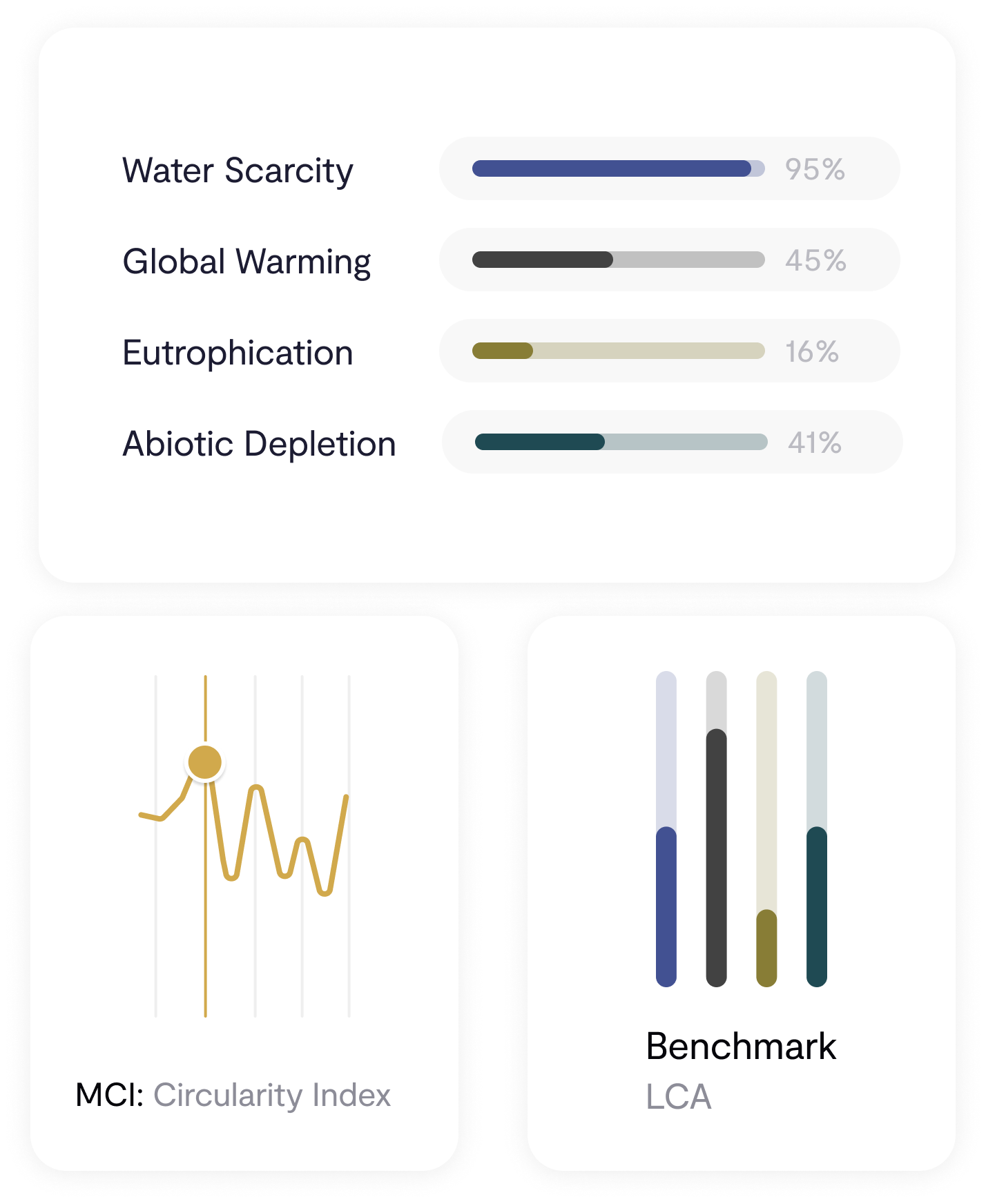The holiday season is just around the corner, bringing with it the sales surge that kicks off with Black Friday, quickly followed by the Christmas campaigns, which will mark the end of the retail cycle for fashion brands. However, is it possible to join this commercial boom in a sustainable way? At BCome, we offer you 7 key strategies to help your fashion business participate in Black Friday and the holiday celebrations responsibly and sustainably.
“To be sustainable as a business, you need to be profitable”
Selling and being sustainable are not incompatible concepts. In the latest edition of BoF Voices, Lawrence Lenihan, Co-Founder of Resonance, shared a key insight: “By definition, to be sustainable as a business, you need to be profitable, they are mutually and necessarily required to exist”. Indeed, a business cannot be sustainable if it is not profitable. However, there is a big difference between being profitable and pursuing infinite growth:
- Optimization vs. maximization. When seeking profitability, the focus is on generating sustainable profits and balancing costs. In contrast, pursuing massive expansion may involve reinvesting profits or assuming temporary losses to secure a larger market share.
- Stability vs. immediacy. There is a significant difference between allocating resources to essential operations that ensure financial stability, such as strengthening customer loyalty, and prioritizing aggressive investments often funded by external capital to achieve rapid growth.
- Caution vs. aggression. Seeking profitability involves a more continuous strategy, where the risks of market fluctuations, fleeting trends, or excessive expansion are minimized, ensuring sustainability even in adverse scenarios.
Do you feel that by being a brand with a sustainable positioning, you’re betraying your values by offering discounts during Black Friday and promoting your products at Christmas? Aiming to capture a portion of the market doesn’t have to conflict with the other sustainable initiatives you’re implementing in your business. During the final months of the year, there is fierce competition among fashion brands. Defining sales strategies that respect your brand’s values without compromising the profitability of your business can be challenging, but it’s not impossible.
Do you feel that by being a brand with a sustainable positioning, you’re betraying your values by offering discounts?
Next, we present seven strategies that your fashion business can follow in the coming weeks to close the most important commercial period of the year without losing sight of its sustainable commitment:
1. Offer products in limited quantities or made-to-order. By limiting the number of units available, the value of each piece is emphasized, making it a more personal item. This not only combats overproduction and its negative impact but also creates a stronger, more personal connection between the brand and the customer, who appreciates the quality and uniqueness of what they purchase.
Asket is one of the fashion brands that implements this philosophy: “We’re creating one, permanent collection of uncompromised essentials, helping us live happier with less”.
2. Promote care guides. By providing this information, you not only help your customers extend the lifespan of their products, but you also teach them to reduce the need for frequent purchases and minimize the environmental impact associated with them. Care guides also highlight the durability of your items, showing that true value lies not in the acquisition, but in how the product is preserved over time.
Under the “Clevercare” initiative, Stella McCartney shares care guides for her garments, promoting more sustainable methods to minimize impact and extend the lifespan of clothing.
3. Encourage repair services. Offering repair services helps reduce textile waste and reinforces the value of garments. Encouraging your customers to repair their clothes contributes to decreasing the demand for new production, which in turn has a positive impact on the environment.
With the slogan “Free repairs forever,” Nudie Jeans is one of the brands that allows consumers to repair their jeans, regardless of when they were purchased.
4. Awareness about consumption. It’s important to share educational content that explains the negative impact of overconsumption and the benefits of reusing garments. This can help people make more informed and responsible decisions. Such content can inspire a greater appreciation for durability and quality over quantity, thereby reducing the need for excessive consumption.
Veja has implemented a program called “Clean, Repair, Collect” aimed at extending the lifespan of its sneakers and promoting more responsible consumption.
5. Implement a recycling program. By offering incentives, such as discounts on future purchases, you can motivate customers to participate in recycling garments and accessories they no longer need. This approach promotes a circular economy, allowing products to remain in use and become valuable resources for other consumers.
Through the “Worn Wear” initiative, Patagonia offers the opportunity to return gently used clothing, which is then refurbished and sold at a reduced price.
6. Promote sustainability. Highlighting the materials, processes and impact behind a product is an excellent way to educate consumers on the importance of making more conscious purchasing decisions. Informing them about how these choices contribute to the preservation of the planet and the well-being of people not only increases the brand’s transparency but also empowers customers to choose more sustainable options.
SAYE, thanks to data provided by BCome, offers information about the footprint of each product and features dedicated sections on its website regarding the impact and traceability of its items.
7. Foster loyalty with purpose. Create reward programs that not only reward purchases but also sustainable actions, such as choosing slower shipping or reusing packaging. By implementing these initiatives, you not only encourage customer loyalty but also reinforce your brand’s commitment to sustainability.
Ganni launched Ganni Repeat, a platform where customers can return garments to be recycled or refurbished, receiving exclusive benefits such as discounts and priority access to collections.
Around 20% of all online purchases are returned, a figure that rises to 30% in the fashion sector
Another essential aspect that is often overlooked during mass sales periods is the impact of shipping. Many consumers choose to shop online and then return products that do not meet their expectations. According to a Deloitte report, around 20% of all online purchases are returned, a figure that rises to 30% in the fashion sector.
It’s estimated that online purchase returns generate 24 million tons of CO2 annually, due to the additional trips required to process them, the energy consumption in logistics centers, and the extra packaging used.
Raising awareness among your consumers about the importance of avoiding mass orders that increase the environmental impact of products is crucial. That’s why we’ve decided to dedicate an exclusive section in this guide to show you how to develop a sustainable shipping and returns strategy that doesn’t increase the environmental impact you’re working so hard to reduce in your products. By implementing more responsible practices in these areas, you will not only minimize your carbon footprint but also encourage more conscious behavior among your customers, helping them make purchasing decisions that align with the sustainable values of your brand.
- Offer more sustainable shipping options. Allow customers to choose grouped or slower shipping methods that optimize routes and reduce the carbon footprint. Incentivize this option with discounts or additional benefits.
- Use packaging materials with a lower impact. Employ recyclable, compostable, or reusable packaging, and reduce the size and weight of the packaging to minimize resource consumption during transportation.
- Implement clear responsible return policies. Avoid unnecessary returns by offering detailed size guides, accurate product descriptions, and personalized customer support. Instead of returning defective products, allow customers to donate them locally with a partial refund.
- Centralize returns to minimize transportation. Create local collection points for returns rather than individual shipments, reducing the environmental impact by collecting multiple packages before transporting them.
- Measure and communicate the impact. Calculate the environmental footprint of your shipping and returns, and share with customers how their decisions can contribute to reducing the overall impact.
It’s normal to feel confused and unsure about whether to get involved in commercial periods that are strongly tied to consumerism. However, these times of the year present a great opportunity to expand your message and put into practice the values that define your brand. At BCome, we encourage you to explore more sustainable ways of offering your products that diverge from traditional market strategies. Would you like to share your needs with us? We’d be happy to listen and help you find solutions that align with your principles and sustainable goals.









